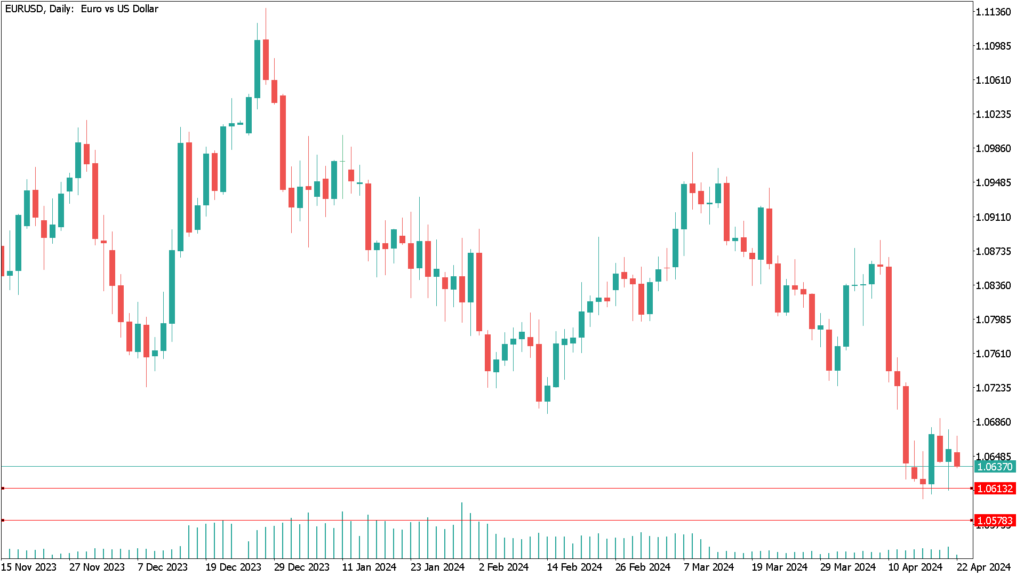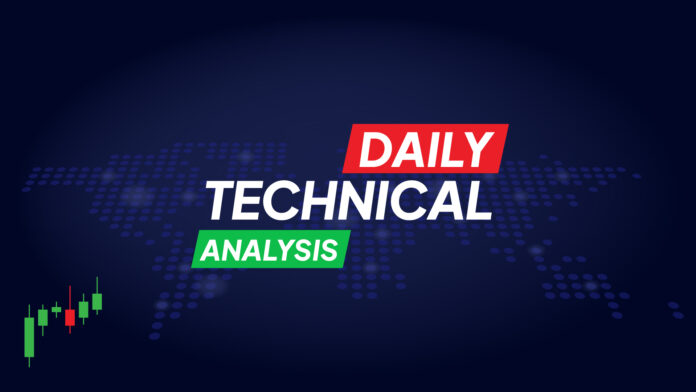Throughout the previous week, the EUR/USD attempted to rebound, although its gains were limited and it could not break the 1.0700 barrier, as selling pressure remained stronger and the US dollar had several supporting factors.
Although the EUR/USD was able to close the week stable near the 1.0655 level, during the same week the pair slipped towards the support levels of 1.0602, the lowest level in five months.
Meanwhile, the EUR/USD’s rebound attempts were generated as fears of a possible increase in tensions in the Middle East were lowered and as investors made a comparative analysis between the stances of the European Central Bank (ECB) and the Federal Reserve (Fed). Data released by ECB policymakers hinted at the ECB’s position to start cutting interest rates by June, and several policymakers believe that three rate cuts by the end of the year would be the best course of action. However, the market was bearish as expectations of rate cuts for both banks were lowered.
The revised estimates indicate that the ECB could only cut the tops only twice this year, which would be a monetary easing of about 70 basis points.
It is clear that this change in estimates comes despite the ECB’s willingness to start the round of cuts in June. Meanwhile, Fed policymakers expect to delay rate cuts.
In the big picture, Fed policymakers are poised to provide further confirmation of a halt to the advance in inflation, lending support to what appears to indicate a change in stance to sustain higher interest rates for longer than previously thought. Consequently, the Fed’s preferred inflation indicator, the personal consumption expenditures (PCE) index, is likely to remain high in March.
According to the results of the economic calendar, the index is expected to accelerate slightly to 2.6% y/y due to higher energy costs. The underlying indicator, which does not take into account food and energy, is expected to increase 0.3% compared to last month, following a similar advance in January.
While the underlying PCE data may not turn out to be as strong as the CPI (consumer price index), which beat estimates and rattled markets earlier this month, Fed Chairman Jerome Powell and other officials have signaled that it will take a while longer for them to gain enough confidence to prove that inflation is on a downward trajectory ahead of cutting rates.
Policymakers are scheduled to watch the usual period of gridlock to pronounce to the public this week ahead of their two-day meeting ending May 1. As a result, next Friday’s new inflation figures will go hand-in-hand with March personal income and spending figures. In an environment of solid employment growth, economists are confident of further increases in household spending on goods and services. On the other hand, further acceleration in income growth is also anticipated.
Daily technical Analysis EUR/USD April 22th
According to the chart, the EUR/USD price remains bearish, despite the fact that its latest losses moved all technical indicators to sell levels. However, the factors driving the US dollar’s gains are strong and consistent, and are represented by the different stance of the ECB which is close to cutting interest rates. Last week, the Fed was discouraged from cutting rates anytime soon along with the latest results and the increase in its demand for buying because many investors see it as a safe haven against the backdrop of the Middle East.
Therefore, the downward trend in the euro’s value against the US dollar could continue if these factors are met, at least until this week’s release of the US central bank’s preferred inflation data.
The support levels that the EUR/USD pair could reach are 1.0600, 1.0545 and finally 1.0480 in that order.




